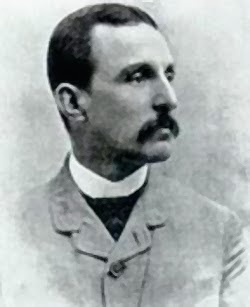Frederick William Stevens
Frederick William Stevens
Frederick William Stevens was a renowned British architect known for his significant contributions to the field of architecture in India during the late 19th and early 20th centuries. Born on March 11, 1847, in Bath, Somerset, Stevens displayed a remarkable talent for design and construction from a young age. He received his formal education in architecture at the prestigious Royal Academy of Arts in London.
Stevens' career took a pivotal turn when he was appointed as the official architect to the Bombay, Baroda, and Central India Railway (BB&CI) in 1867. This role provided him with the opportunity to showcase his innovative architectural style, blending traditional Indian elements with contemporary Western influences. One of his most notable works during this period was the iconic Chhatrapati Shivaji Terminus in Mumbai, formerly known as Victoria Terminus.
In addition to his railway projects, Stevens also designed several prominent buildings in Mumbai, including the Royal Alfred Sailors' Home and the BMC Headquarters Building. His architectural legacy in India is characterized by a harmonious fusion of Victorian Gothic and Indian architectural motifs, reflecting his deep appreciation for local craftsmanship and culture.
Stevens' architectural prowess extended beyond India, with notable projects such as the Crawford Market in Mumbai and the Royal Bombay Yacht Club. His distinctive style, characterized by intricate detailing and grandeur, left an indelible mark on the architectural landscape of colonial India.
Despite his untimely death in 1900, Frederick William Stevens' architectural masterpieces continue to stand as enduring symbols of his creative vision and technical expertise. His legacy serves as a testament to the enduring influence of British architects in shaping the architectural heritage of India.
Search WikiMD
Ad.Tired of being Overweight? Try W8MD's physician weight loss program.
Semaglutide (Ozempic / Wegovy and Tirzepatide (Mounjaro / Zepbound) available.
Advertise on WikiMD
|
WikiMD's Wellness Encyclopedia |
| Let Food Be Thy Medicine Medicine Thy Food - Hippocrates |
Translate this page: - East Asian
中文,
日本,
한국어,
South Asian
हिन्दी,
தமிழ்,
తెలుగు,
Urdu,
ಕನ್ನಡ,
Southeast Asian
Indonesian,
Vietnamese,
Thai,
မြန်မာဘာသာ,
বাংলা
European
español,
Deutsch,
français,
Greek,
português do Brasil,
polski,
română,
русский,
Nederlands,
norsk,
svenska,
suomi,
Italian
Middle Eastern & African
عربى,
Turkish,
Persian,
Hebrew,
Afrikaans,
isiZulu,
Kiswahili,
Other
Bulgarian,
Hungarian,
Czech,
Swedish,
മലയാളം,
मराठी,
ਪੰਜਾਬੀ,
ગુજરાતી,
Portuguese,
Ukrainian
Medical Disclaimer: WikiMD is not a substitute for professional medical advice. The information on WikiMD is provided as an information resource only, may be incorrect, outdated or misleading, and is not to be used or relied on for any diagnostic or treatment purposes. Please consult your health care provider before making any healthcare decisions or for guidance about a specific medical condition. WikiMD expressly disclaims responsibility, and shall have no liability, for any damages, loss, injury, or liability whatsoever suffered as a result of your reliance on the information contained in this site. By visiting this site you agree to the foregoing terms and conditions, which may from time to time be changed or supplemented by WikiMD. If you do not agree to the foregoing terms and conditions, you should not enter or use this site. See full disclaimer.
Credits:Most images are courtesy of Wikimedia commons, and templates Wikipedia, licensed under CC BY SA or similar.
Contributors: Prab R. Tumpati, MD

